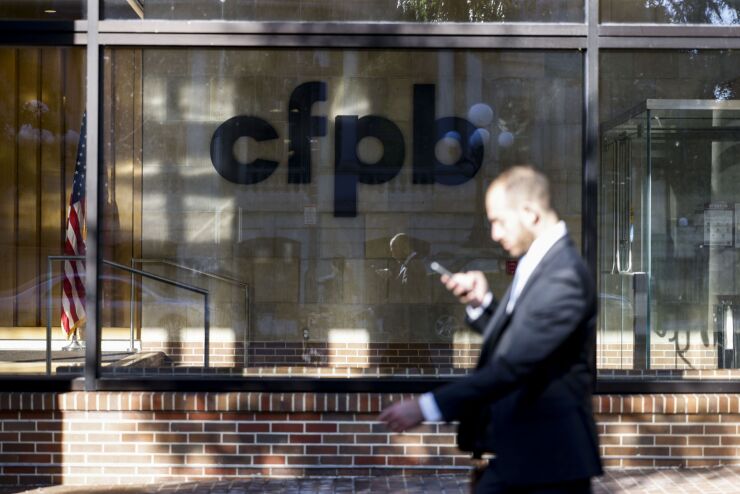
This fall, the Consumer Financial Protection Bureau will finalize its 1033 rule to accelerate open banking and give consumers more control over their financial data.
With these new requirements around the corner, financial institutions and fintechs may disagree on the fine print, but there is strong support for the significant consumer benefits and protections the rule will create. For forward-thinking institutions, the 1033 rule can also drive opportunities to better serve their customers and meet ever-growing expectations for digital finance.
The 1033 rule would ensure consumers are guaranteed the right to access and share their financial data. Financial services companies would be required to allow consumers — and third parties they authorize — to access account information such as transactions and account balances.
These changes make sense. Consumers' preference for, and adoption of, digital services has revolutionized most of the economy. People communicate via Slack, order their groceries on Instacart and access health care via Zoom. Consumers expect financial services to work the same way.
For many, visits to local bank branches have been replaced by digital banking and mobile apps. Services like Venmo, Zelle and CashApp are substituting for cash and checks. Digital tools have made it easier for consumers to access financial advisory services that used to be exclusive to wealthier clients. In order for any of this to be possible, people must be able to easily and securely share their financial information with apps or services they choose. Some banks are already embracing this and have begun to meet these consumer expectations; those banks that don't adapt quickly risk losing customers to those who do.
The rule could also be a much needed boon for small banks and credit unions lacking billion-dollar tech budgets and struggling to meet the demand for digital finance. If a customer can link all of their favorite apps to one bank account, the customer doesn't need to switch to a different institution in order to access the digital financial services they want to use — from investing apps to digital payments to budgeting tools to buy now/pay later services and more.
In fact, Rohit Chopra, the director of the CFPB, has referred to open banking as a business opportunity for community banks to "steal the lunch" of bigger competitors.
Once the CFPB's rule is finalized, customers at community banks and credit unions would have a right to share their data to access a range of digital financial services. Likewise, smaller institutions can also leverage data to offer their own personalized products and services as well as gain new insights through partnerships with fintechs.
For many institutions, the CFPB's rule can spur banks to become the digital "branch" their customers want. Banks and credit unions of all sizes — including many of the nation's largest banks — are already leveraging open banking solutions as part of their own product strategies.
Despite these obvious benefits, some banks are looking at the rule as a compliance burden that they should now oppose. Ironically, requiring the use of APIs is a tool that the financial industry has been calling for for many years in order to eliminate screen scraping and ensure open banking functionality. Treating API development as an unwelcome compliance obligation, however, is to the detriment of banks and consumers alike.
Today, nearly all of the largest banks, like JPMorgan, Bank of America and Wells Fargo, as well as many popular fintechs, currently have APIs in place. Others are in the process of migrating traffic fully to APIs.
Likewise, thousands of community banks and credit unions today already have access to APIs via core service providers or other platforms. At Plaid, over 75% of our traffic is on or committed to APIs — and with the finalization of Dodd-Frank 1033, we can get to 100%. Driving API adoption in the market is essential for safe open banking practices and by embracing APIs, the CFPB is reaffirming where the industry is already heading.
As fintechs and banks look ahead to how they will meet consumer expectations in an open banking future, there are two areas the CFPB could provide greater clarity on to ensure effective implementation.
First, the agency should make clear its oversight authority and supervision of data aggregators. This is something banks and fintechs have called for as it would provide reassurances and benefits to the financial services ecosystem. Second, open banking shouldn't result in banks being required to vet the thousands of apps and services a consumer may choose to share their data with.
Industry and consumers would benefit from clarity on risk management practices so everyone can operate fairly and effectively while ensuring consumers are protected.
For banks and credit unions to win in this new world, it is important that they prepare their digital strategies and get ahead of the regulatory requirements in 2024.






